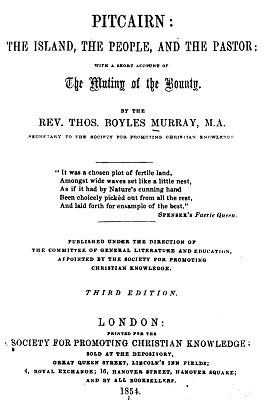
surfresearch.com.au
moresby : surfing on pitcairn island, 1852
moresby : surfing on pitcairn island, 1852
| home | catalogue | history | references | appendix |
 |
surfresearch.com.au
moresby : surfing on pitcairn island, 1852 |
 |
Pitcairn; the island, the people, and the pastor, with a short account of the Mutiny of the Bounty. Society for Promoting Christian Knowledge, London, 1854. Hathitrust http://hdl.handle.net/2027/nyp.33433082431614 |

| home | catalogue | history | references | appendix |